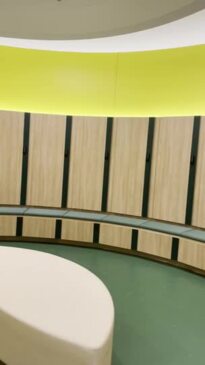From World Cup to community, this is where the next Matilda’s will be made
Ellie Carpenter kicked off a career on country town pitches, Sam Kerr scored goals in suburban Perth’s Mosman Park. Now the next gen of Matildas’ have a multimillion-dollar facility.

Ellie Carpenter kicked off a career on the country pitches of Cowra, Sam Kerr scored goals against boys’ teams in suburban Mosman Park and, as the nation revels in the Matilda’s historic World Cup win against France, the next chapter of female football is already being written — in a multimillion-dollar training complex aptly dubbed the “home” of the star team.
The “Home of the Matildas”, nestled in Melbourne’s La Trobe University Sports Park, was funded as part of a $42.29 million investment by the Andrews’ Labor government and an additional $15m federal spend, marking the largest government contribution in any football-specific project nationwide.

The development of the grounds, spearheaded by a joint partnership between Football Victoria and Nike, marks a “lightning rod for women’s sport”, says brand director for the sports label Nick Atkinson, who tells the Australian, “the future focus is ensuring the community feels it more broadly”.
“These grounds will change the game not only at an elite level, but at the grassroots too.”
Boasting two FIFA-grade pitches, the multi-level facility formally opened July 4 for the national team, 10 days before the Matildas would go on to score their first victory against France in a World Cup friendly.
Sunday marks the first time the base opened to the community, with fields, a gym, a recovery pool and training rooms all built to support female players across a span of ages, abilities and level of competition.

“The grounds are here to support the hopes and dreams of our national team but also all levels of players,” Football Victoria executive manager Marketing Engagement and Legacy Mandy McCarter tells the Australian.
“A 12-year-old F-grade player is just as welcome to train to be whatever type of footballer she wants.”
While the Matildas’ have slowly grown used to selling out 80,000 seat stadiums, located within the grounds is also an 800-seat grandstand inviting fans of local teams to cheer on the next generation of players taking part in the local Nike FC Community Cup.
The Cup, which has run for five years, has seen local participation grow from a debut of 60 all-girls teams to over 100, with the first grand final match held on the “Home of the Matildas” grounds today.
Despite player sign-ups improving dramatically since the hype of the Matildas reached fever pitch this year, there remains a gender gap in the prevalence of coaches and referees in the code.

In response, Nike today announces a four-year extension of the partnership with Football Victoria, with the addition of an Accelerator program, investing in the future of female coaching programs.
“We wanted to see whether we could have an impact on visible female coaching in the game, and figure out what the barriers were to it – the main were time and cost to accessing coaching programs,” Atkinson explains.
“Everyone wants the best coach they can have – if that coach can be female, relate to the players and know where they’re coming from, as well as be the best, it’s going to improve retention rates in the sport.”
Following a pilot trial of coaching development in the state, the fully-funded program oversaw a 26% increase in female coaches in the game. Additionally, the extension of the partnership will look to clock up 21,060 minutes of play time annually for athletes using the facility.

The training grounds, crafted by an all female-architect team, forms the apex of women’s sports development across the Australasia region, aligning with Nike and Football Victoria’s ambitious goal of achieving complete gender equity in the sport by 2027.
“We want a facility like this to be normalised,” says McCarter, noting a “perfect storm” was born from Victoria’s Fair Access Policy Roadmap, the nation’s groundbreaking plan aiming to develop a statewide foundation to improve the access to, and use of, community sports infrastructure for women and girls.
“The global stakeholders that have come through this facility have told us there’s nothing like it – I’ll feel like we’re making progress when they say there is. We don’t want this to stay unique for too long, we want other people to do the same.”
As for whether they’ll breed the next Matilda, McCarter says, “we sure hope to.”







To join the conversation, please log in. Don't have an account? Register
Join the conversation, you are commenting as Logout